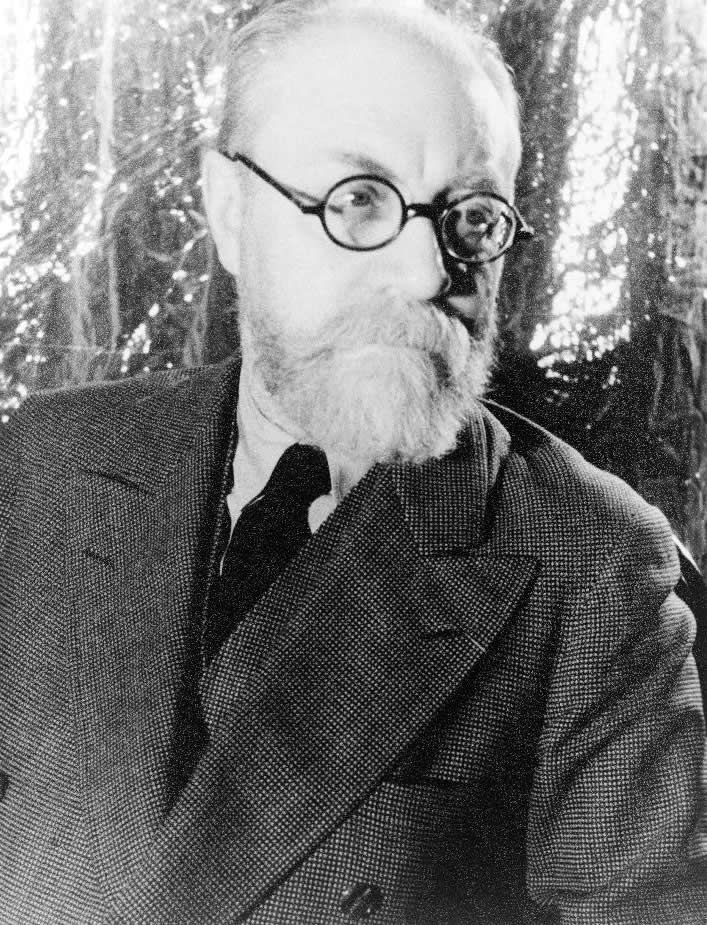“Siempre hay flores para el que desea verlas.”
Variante: Siempre hay flores para aquellos que desean verlas.
Henri Émile Benoît Matisse fue un pintor francés conocido por su uso del color y por su uso original y fluido del dibujo.
Como dibujante, grabador, escultor, pero principalmente como pintor, es reconocido ampliamente, junto con Pablo Picasso, como uno de los grandes artistas del siglo XX. Al inicio de su carrera, se le identificó con el fovismo y para los años 1920 ya se había destacado por su maestría en el lenguaje expresivo del color y del dibujo, la cual desplegó en una inmensa producción que se extendió por más de medio siglo, y que consagró su reputación como una de las figuras centrales del arte moderno. Durante su trayectoria, supo conjugar en sus obras la influencia de artistas como Van Gogh o Gauguin, con la de las cerámicas persas, el arte africano o las telas moriscas.
Wikipedia

“Siempre hay flores para el que desea verlas.”
Variante: Siempre hay flores para aquellos que desean verlas.
"Interview with Henri Matisse" by Jacques Guenne, L'Art Vivant (15 September 1925), translated by Jack Flam in Matisse on Art (1995)
1921 - 1940
Contexto: Slowly I discovered the secret of my art. It consists of a meditation on nature, on the expression of a dream which is always inspired by reality. With more involvement and regularity, I learned to push each study in a certain direction. Little by little the notion that painting is a means of expression asserted itself, and that one can express the same thing in several ways. Exactitude is not truth, Delacroix liked to say.
1905 - 1910, Notes of a Painter' (1908)
1905 - 1910, Notes of a Painter' (1908)
In a letter to a friend, Nice 1918, as quoted in 'Matisse & Picasso', Paul Trachtman, Smithsonian Magazine, February 2003, p. 6
1910s
“The artist begins with a vision — a creative operation requiring effort. Creativity takes courage.”
As quoted in Artist to Artist : Inspiration and Advice from Visual Artists Past & Present (1998), p. 62
Posthumous quotes
Un musicien a dit: en art la vérité, le réel commence quand on ne comprend plus rien à ce qu'on fait, à ce q'uon sait, et qu'il reste en vous une énergie d'autant plus forte qu'elle est contrariée, compressée, comprimée. Il faut alors se présenter avec la plus grande humilité, tout-blanc, tout pur, candide, le cerveau semblant-vide, dans un état d'esprit analogue à celui du communiant approchant la Sainte Table. Il faut évidemment avoir tout son acquis derrière soi et avoir su garder la fraîcheur de l'Instinct.
1940s, Jazz (1947)
“I have been no more than a medium, as it were.”
As quoted in Smithsonian (November 1986)
Posthumous quotes
Quote of Matisse in his notebook, c. April 1945; as cited in 'Matisse & Picasso', Paul Trachtman, Smithsonian Magazine, February 2003, p. 6
1940s
Quote of Matisse in his letter to Sergei Shchukin [the Russian buyer of his still-life w:The Dessert: Harmony in Red (The Red Room), that year], 6 augustus 1908; as quoted by w:Hilary Spurling, The Unknown Matisse: Man of the North, 1869 – 1908, Penguin UK, 28 Sep, 2006, note 182
1900s
“Impressionism is the newspaper of the soul.”
As quoted in Matisse (1984) by Pierre Schneider
Posthumous quotes
Fuente: 1905 - 1910, Notes d'un Peintre' (Notes of a Painter) (1908), p. 410
Statement by Matisse to Tériade; as quoted by Tériade in 'Constance de Fauvisme', in 'Minotaure' (15 October 1936), translated by Jack Flam in Matisse on Art (1995)
1930s
Fuente: 1900s, Notes d'un Peintre (Notes of a Painter) (1908), p. 411
Fuente: 1900s, Notes d'un Peintre (Notes of a Painter) (1908), p. 410
Fuente: 1900s, Notes d'un Peintre (Notes of a Painter) (1908), p. 413
“I don't paint things. I only paint the differences between things.”
Je ne peins pas les choses. Je ne peins que les différences entre les choses.
"Henri Matisse: contre vents et marées : peinture et livres illustrés de 1939 à 1943"
1930s